Welcome to “Collecting Pinball Machines From the Birth of Pinball to the 1930s”.
I am going to start us off by talking about the “and before” part!
My name is Caitlyn Pascal and on the screen are ways you can find me.
My primary blog is pinballnovice and my blog of Japanese arcade research is called earlyarcadesjapan.
I want to talk about pinball ancestry and let's see how much we can cover in a brief period of time.
[NEXT SLIDE]
Here is Whiffle, generally considered the first coinop pinball machine. This is generally where “pinball collecting” begins for most people. There is no single element of this machine that is entirely NEW, but a few things combined together here for the first time.
1 Bagatelle playfield with ball and pins
2 Payment acceptor
3 Playfield sealed from the player via a sheet of glass
4 Able to recycle balls and reset the game without operator intervention.
[NEXT SLIDE]
I like to say that Pinball Ancestry is looking at everything that brought us to Whiffle.
[NEXT SLIDE]
A well-known example of this would be the Montague Redgrave bagatelle pictured here, submitted for a US patent in 1871.
This was not the first table like this, nor was it the first game like this with a spring plunger, but it was the first one patented within the USA, and over the next few decades Redgrave’s bagatelle games, where at least 40 variations exist, became very popular.
While they were enjoyed by people of all ages, they were still primarily a toy. When you look at the timeline of pinball ancestry, we often see toy versions as a cultural aftershock of larger versions built for commercial use. And that is something we also see with most arcade games.
[NEXT SLIDE]
Here is a pin bagatelle from France. I say “pin bagatelle” specifically, because there are so many different types of table games that get referred to as “bagatelle” that I am trying to never just use the term ‘bagatelle’ by itself.
First thing to note is its size. This is decidedly NOT a toy. It is 65” long and 33” wide, slightly larger than a Bally Dolly Parton pinball machine, which is 54” x 31”.
This table is from the mid 19th century. It has gates along the playfield for your ball to pass through to score points. It also has a very ornate gate at the top with a bell, which is typically the most valuable shot in the game. This model has a spring plunger in the right shooter lane, though most tables of this sort are played exclusively with a cue.
[NEXT SLIDE] 2:30
During my research I came upon this wonderful 1905 photo of a billiards hall in New York state. One thing I quickly learned when looking at pinball ancestry was that you should always check anything related to billiards, and this image pays off handsomely.
[NEXT SLIDE]
In the back corner of the room we see a game that is sometimes called Klondike Pool or American Bagatelle. These tables were made in the late 19th century until the 1910s. Similar to the French bagatelles that inspired them, you have a shooter lane on either side, and a playfield full of pins and gates for the ball to traverse as it descends. We can see a bell mounted in the center of the playfield.
At the very top center there is another ball placed, resting in a tiny divot on the playfield. We call this the king ball, a concept that came from the game of Cockamaroo. You can shoot for the king ball and knock it from its perch and score with both balls.
What makes Klondike pool distinctive are the trap holes in the playfield. These holes are connected via channels to a trough at the front of the machine for the ball to come out. This foreshadows both the pinball gobble holes of the 1950s and the pinball subways of 1980s, though there is not a direct connection.
[NEXT SLIDE] 4
Some things that fall under pinball ancestry might not look so obvious to a pinball fan. Here is a toupie hollandaise table. You use a spinning top to knock down wooden skittles for points. These tables apparently have a history traceable to the 16th century, and we can readily find evidence of them in the 18th century.
Purportedly, some tables would have a bell mounted beneath them and if a player jostled the table too hard the bell would ding. Essentially a proto version of a tilt bob. EDIT: while some tables have apparently had bells attached beneath them, they are thought to be later additions and not original to the table.If you were at the York show last year, you might recognize this table. It is probably from the end of the 19th century, and is now on display at the Roanoke Pinball Museum.
It is composed of beautiful, heavy brasswork and has mother-of-pearl scoring inlays under the arches. It’s an absolutely stunning piece to behold.
This game did not need to be built so lavishly. Modern versions, just called ‘skittles’, are readily available. But these were pieces of elegant furniture that, to me, define Aristocratic Table Games.
[NEXT SLIDE]
To paraphrase astronomer Carl Sagan, “If you wish to make a pinball machine from scratch you must first invent the universe.” In games research this is the problem of arbitrarily choosing your context, since games can be traced back to the beginnings of all society. For pinball ancestry I choose to start at aristocratic gaming tables, and all of the mysteries that currently swirl around them.
[NEXT SLIDE]
Aristocratic table games were toys for the wealthy. They could be purchased for saloons & bars, but I probably do not need to convince many people here of the enticing idea of spending significant money to own a meticulously crafted high-end piece of gaming machinery for their own private game room.
Some of these were crafted by the finest woodworkers and metalworkers of their day. All of the gameplay elements that went into Whiffle have roots in these games of the 18th and 19th centuries, with origin stories that span the globe.
Or at least that is the picture that is emerging, because
[NEXT SLIDE] 6
Pinball Ancestry is full of mysteries just waiting to be solved!
There has never been a more exciting time to research pinball ancestry. Each year, new troves of data are being digitized. Newspapers and patent texts from previously unread decades and centuries are coming online. Plus books and ephemera from different countries, provinces, municipalities, and trade groups.
Previously, work like this would require travelling to different countries and manually digging through archives.
Contemporary OCR and translation tools help remove the barriers of access to these materials from 150-250 years ago. For example, modern tools have allowed me to conduct research in Japanese, German, French, and even old-timey British, where they use those ridiculous elongated F characters instead of an S.
[NEXT SLIDE]
One of the most compelling mysteries within Pinball Ancestry is that of The Chateaux De Bagatelle in Paris, France.
Dick Bueschel’s Encyclopaedia of Pinball Volume 1 presents a narrative of the Comte D’Artois unleashing the game of bagatelle upon the French aristocracy.
I read this and really wanted to know what kind of table was being spoken about here. I went through each of the references given in the book, and unfortunately there was no conclusive evidence that a pin bagatelle table ever existed there.
[NEXT SLIDE]
A quote about the Comte D’Artois, from a 1903 article cited by Bueschel:
“He had a number of domains, was a gambler, a betting man, and constantly in money difficulties, and his brother, Louis XVI, had several times to pay his heavy debts. [...] He kept a gaming table in his own house;”
But in the parlance of the time, “gaming table” was just a table where people would gamble with cards or dice. According to the floor plan, he did have a billiards room. But the phrase, “hold a gaming table” was just inviting people around to gamble.
After presenting this narrative, Bueschel eventually concedes: “The remarkable coincidence of the appearances of this new betting game at precisely the time that a leading member of the inner court circle of France had a game room in a building called Bagatelle beggars a connection between [them].” (EoP v1 p4)
While much of the history of France in the Encyclopedia Of Pinball is well footnoted, the assertions about the game itself are not. There is not a lot of evidence to support that delightful theory of bagatelle’s inception. Perhaps the evidence is out there and perhaps you will be the one who can dig it up, but for the time being we have to consider this a bit of a myth.
[NEXT SLIDE] 9
One confounding factor is that we only start seeing the word Bagatelle referring to a game table around 1810. And that was in regards to an English nine-hole Bagatelle which is very different from the other tables we’ve seen, as it is a billiards variant played on a level surface.
These nine hole bagatelles were immensely popular in the UK. Many of these tables have the ability to fold and travel well, and they came to North America on military ships.
[NEXT SLIDE]
You have probably encountered this weird racist political cartoon showing Abraham Lincoln at a similar Bagatelle table. If you count the holes you'll see this is actually a 21 hole bagatelle table not a nine hole. There are variants that go past nine holes, but they are extremely rare. If you do find some documentation of a 21 hole Bagatelle board out there please let me know. I'm sure there's some out there somewhere just waiting for a collector to discover.
[NEXT SLIDE]
Maybe at some point you found yourself on the Wikipedia page for pinball, and you have probably seen this remarkable table. One thing to note about this section of pinball prehistory is that there are no citations. There are many specific assertions given with confidence and this might as well have been written by ChatGPT. Without sources it is essentially a folktale that we tell ourselves because it does make a good story. The section even ends by tossing out a wildly incorrect assertion that this game was “directly ancestral” to Japan’s pachinko.
I do not want to digress into a rant about how AI has wildly undermined humanity's store of knowledge, and a lot of these details were here on the wiki, being wrong, for years before AI slop became pervasive.
On my blogs I share all of my pinball ancestry research, notes, & sources. Especially in this day and age, we probably shouldn't rely on anything we cannot properly cite. I approach my research with the philosophy that I might die tomorrow and so I am always eager to share the material I find in the hopes that everyone else will be able to pick it up and run with it.
[NEXT SLIDE]
This is a pin Bagatelle table that is in the collection of the Deutsche Museum in Munich Germany. It is a work of remarkable craftsmanship made by an expert woodworker.
I would like to introduce my friend James Masters. He is a games researcher from the UK. You can find him at his website masters of games dot com where he sells many traditional wooden games and supplies. James has published a number of academic papers, most recently on the ancient Egyptian game of Mehen as well on the English game Loggats, which is a little bit more recent; only about 500 years old.
James was able to make arrangements with the curators at the Deutsche Museum to spend hours inspecting this table.
[NEXT SLIDE]
The curators of the museum claim the game is from the late 1700s and we have found no reasons to doubt that, though the provenance is unknown.
The top level of this table opens to reveal a basic billiards game with a cup in the center. Raise the top of the table and a pin bagatelle like we see in this photo can be propped up. Beneath the pin bagatelle there is a catapult game hidden inside.
This is actually one of two tables that the museum has in their collection. The other table is very similar except it has three entirely different games built into it.
A ball is propelled into the playfield using a flat piece of spring metal in the plunger lane. A bell hangs from the top gate, there are gates of various points on the way down, and half of the slots along the bottom also score points.
So while the evidence for the Chateau de Bagatelle might be a bit sketchy, here we have this incredible game possibly from the late 1700s and so many of the common trappings of 1930s pinball are already visible. Currently this is the oldest pin bagatelle artefact known to exist in the world.
There's a lot more to say about these tables and if you are interested please feel free to ask me later or send me an email.
[NEXT SLIDE] 13.5
I want to close with a mystery I was able to solve.
Based on my pinball research, I was contacted by Japanese printmaker and pachinko historian Kazuo Sugiyama to assist with the English language research for a book about Japanese rolling ball, aka Tamakorogashi, a game which dates back to around 1870 Japan.
Rolling ball arrived in the USA in 1901 via the World Exposition in Buffalo, and was soon after found at major vacation hot spots like Coney Island, and enjoyed decades of popularity. Patrons would roll balls up a long play field into scoring pockets of different denominations. Their accumulated scores could be traded for prizes of wares imported from Japan.
[NEXT SLIDE]
This was a time when very few Americans had ever encountered a Japanese person or had a chance to purchase any Japanese products. The shopkeepers would keep a tally of your points across multiple visits and ask people to eventually redeem them before the end of the season.
As electricity became more prevalent, rolling ball evolved into games like Fascination and Pokerino. As rolling ball faded in the 1920s, skee ball parlours had begun adopting the popular redemption model. Tamakorogashi, this rolling ball game from Japan, had invented redemption arcades, one of the largest sectors of today's arcade industry.
[NEXT SLIDE]
This does not have to deal with pinball per se. I'm talking about this under an umbrella of arcade ancestry, an expansion of the idea of pinball ancestry, where we look at all of the developments that led to arcade machines as we know them.
Japan has some incredible arcade history just waiting for eager researchers to dive into.
I am currently compiling a history of Japanese electromechanical and mechanical arcade games on my earlyarcadesjapan site, and if you are interested in that topic please come talk to me later.
Some quick examples:
The image on the right is from a scroll from the 1890s showing a ball game where you gamble on which ball would arrive first. The coinop equivalent would be Steeplechase and similar trade stimulators popular in the 1930s.
[NEXT SLIDE]
These are depictions of early cork gun and BB gun shooting galleries, from around 1908 and 1891, respectively.
[NEXT SLIDE]
Before the rifle became popular there were blowgun shooting galleries.
The one on the left is from the 1870s.
The one on the right is a depiction from 1813, where the targets are shown as elaborate demon figures, spring loaded to startle players when struck.
[NEXT SLIDE]
Lastly, here's the oldest piece of arcade ancestry I've discovered from Japan so far, an archery shooting gallery where spring loaded mechanical dragons and demons surprise and delight the players.
Now, I promise we will stay firmly in the 20th century, specifically the 1930s. Let’s talk about Whiffle, and all of the pinball goodness that followed.
Thank you very much for your time.

























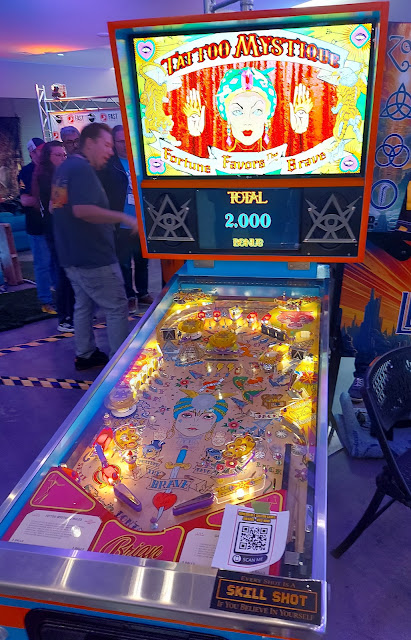
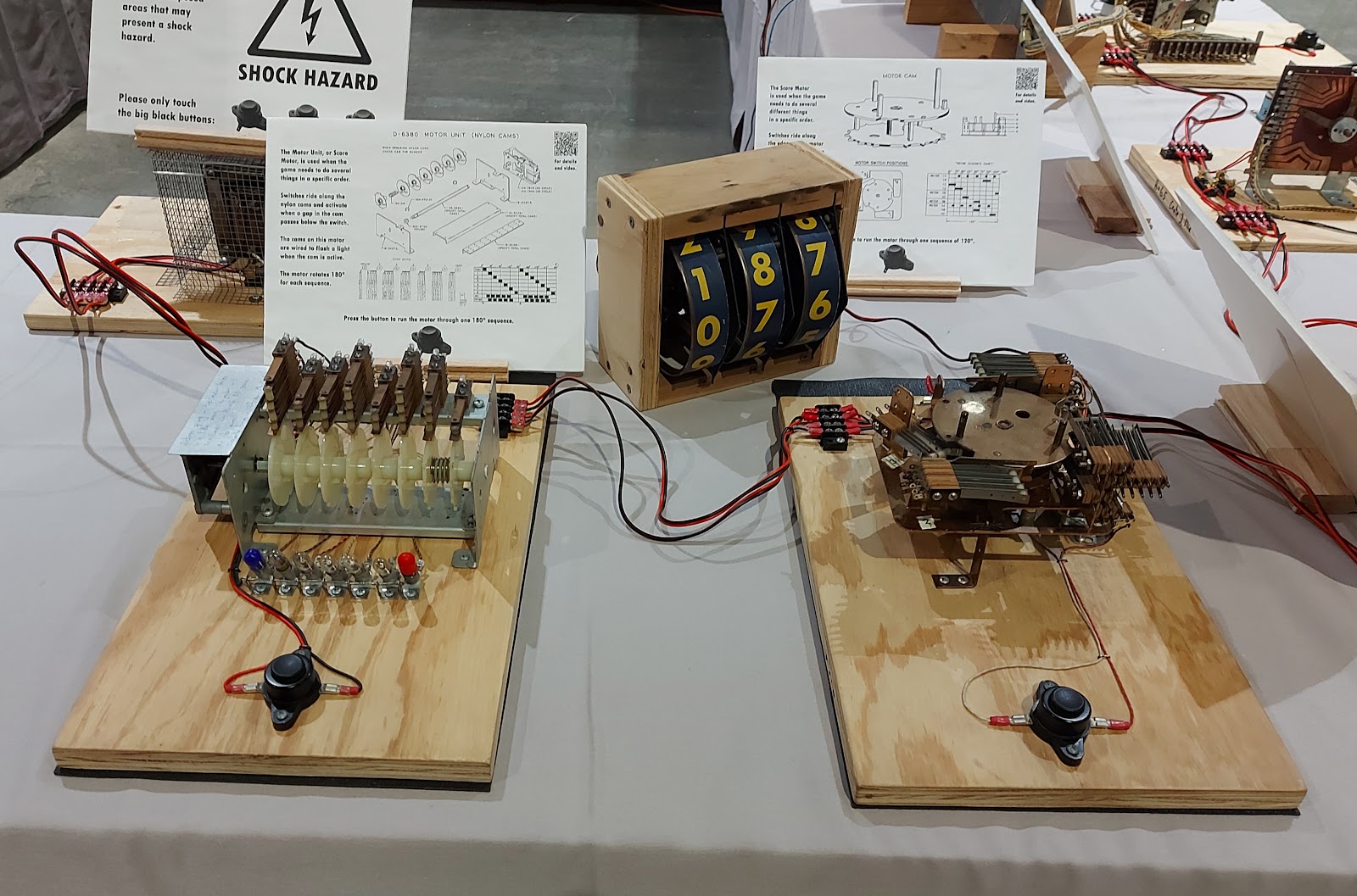






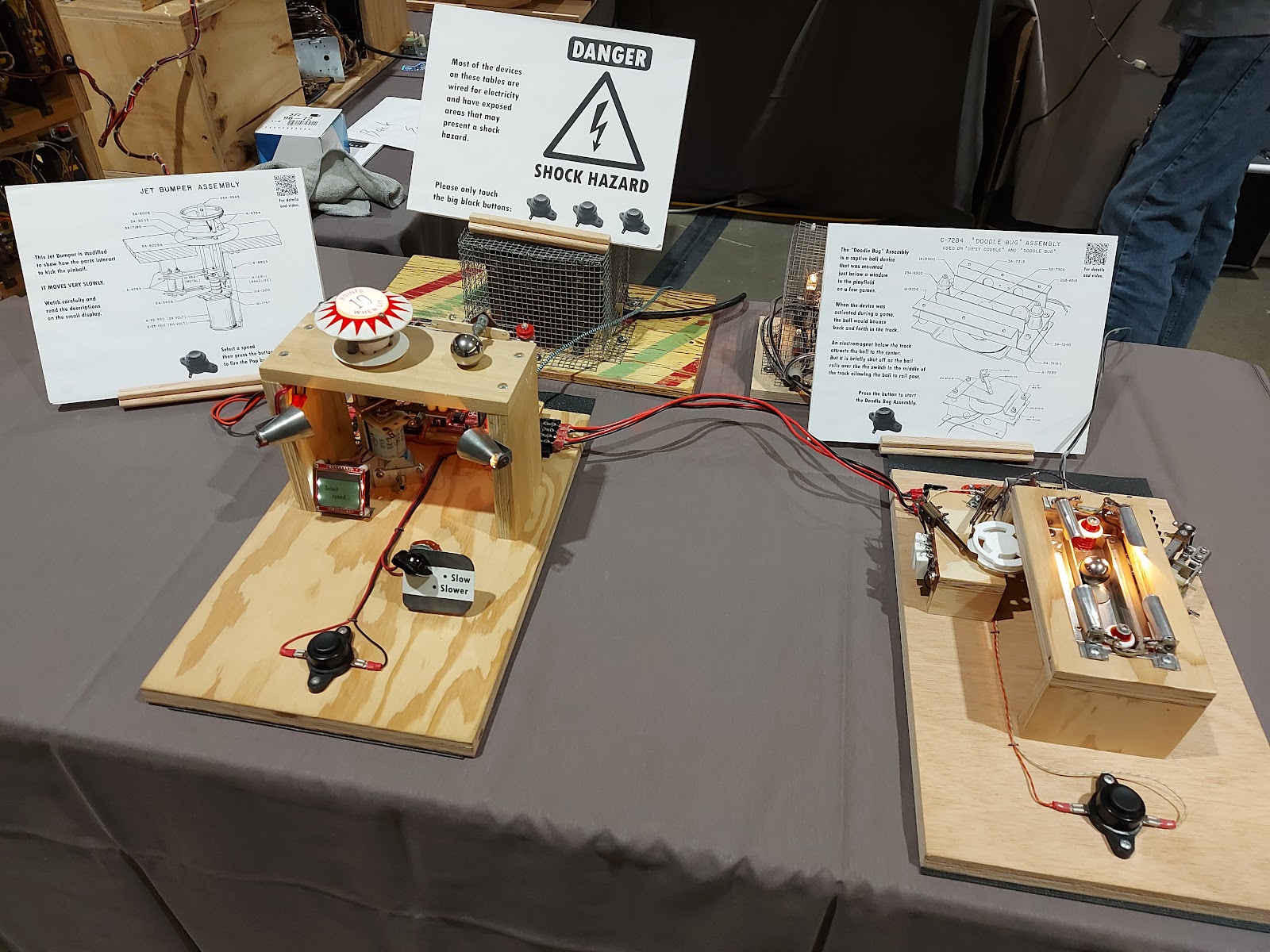
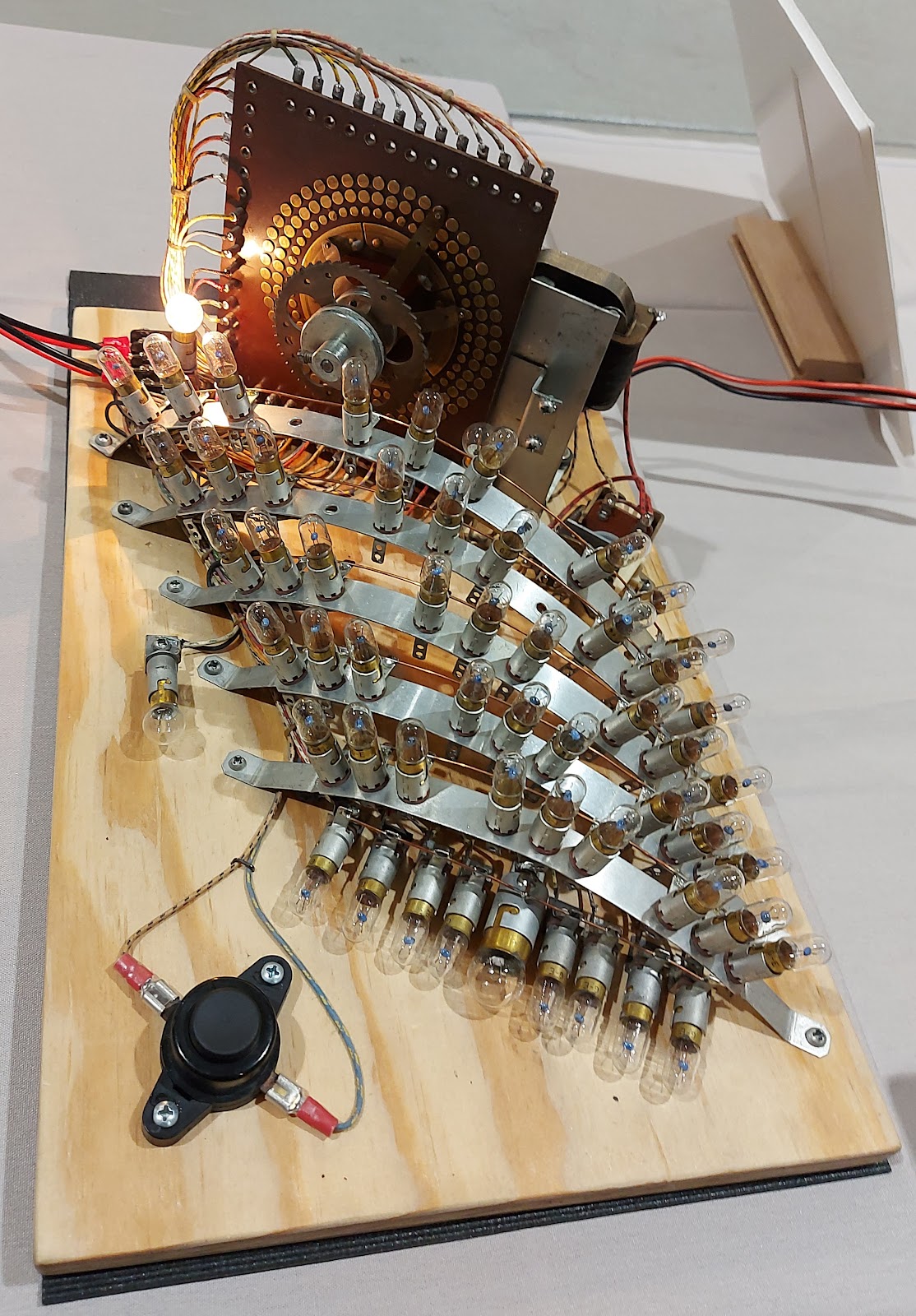








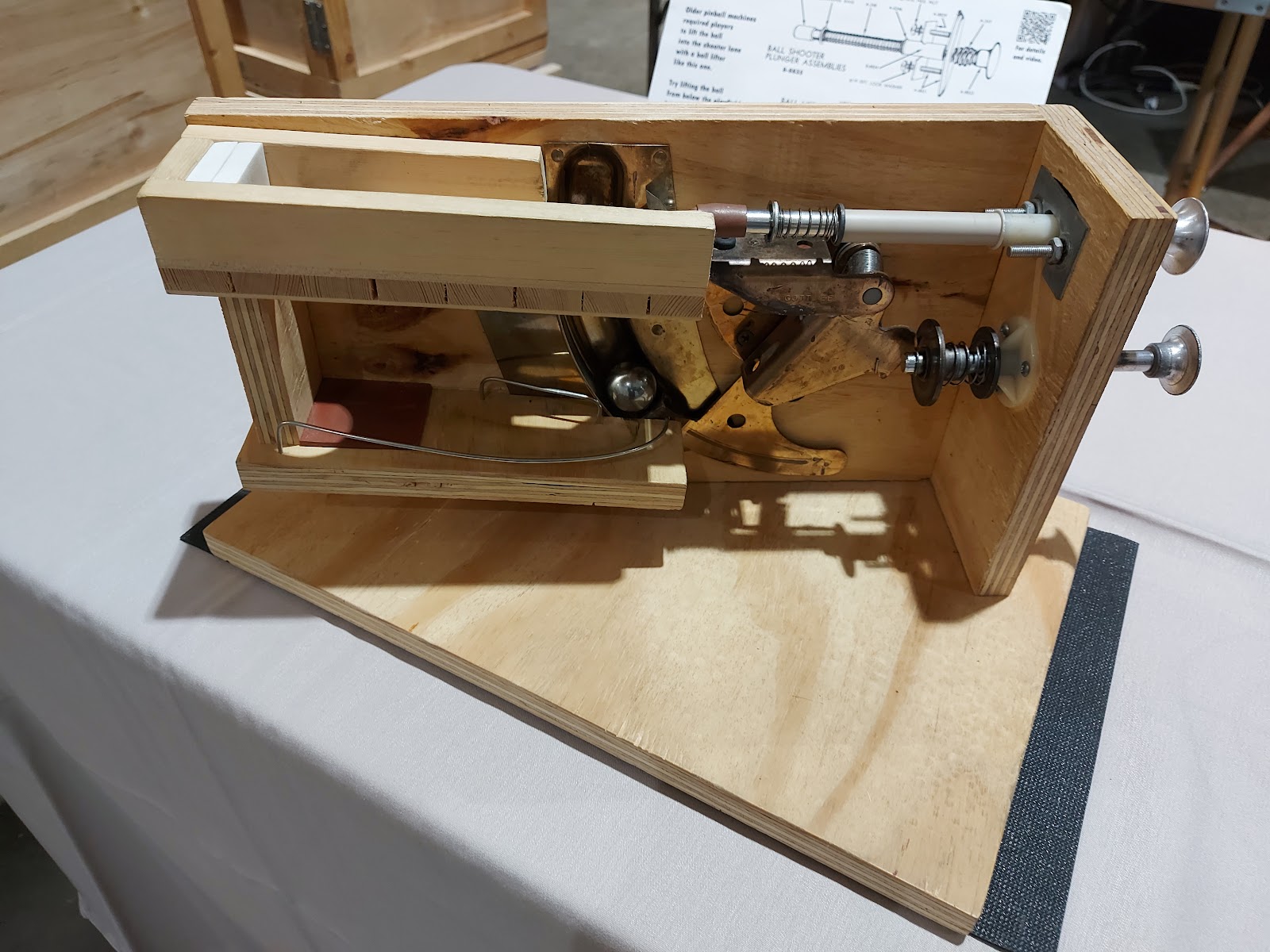


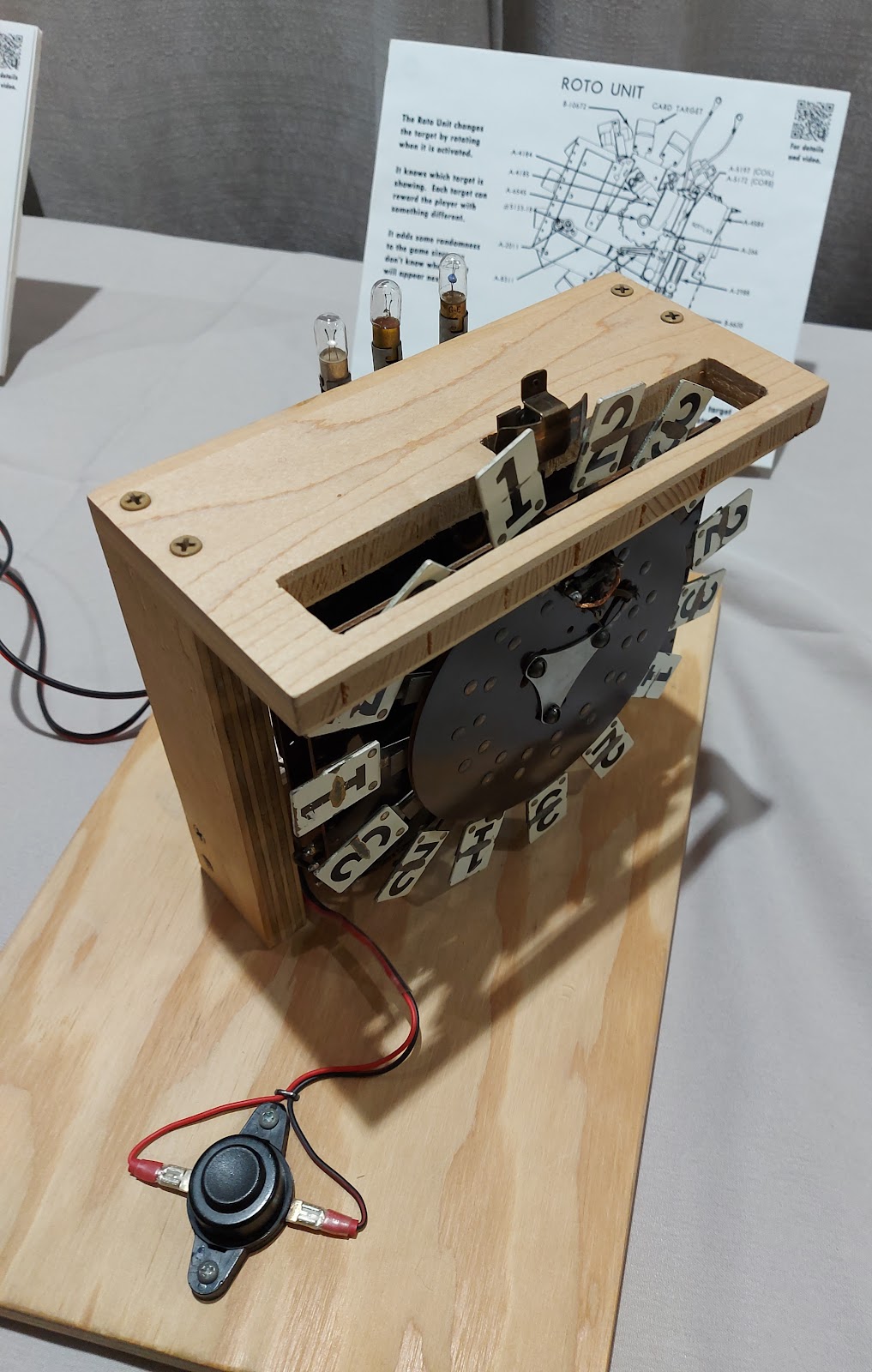





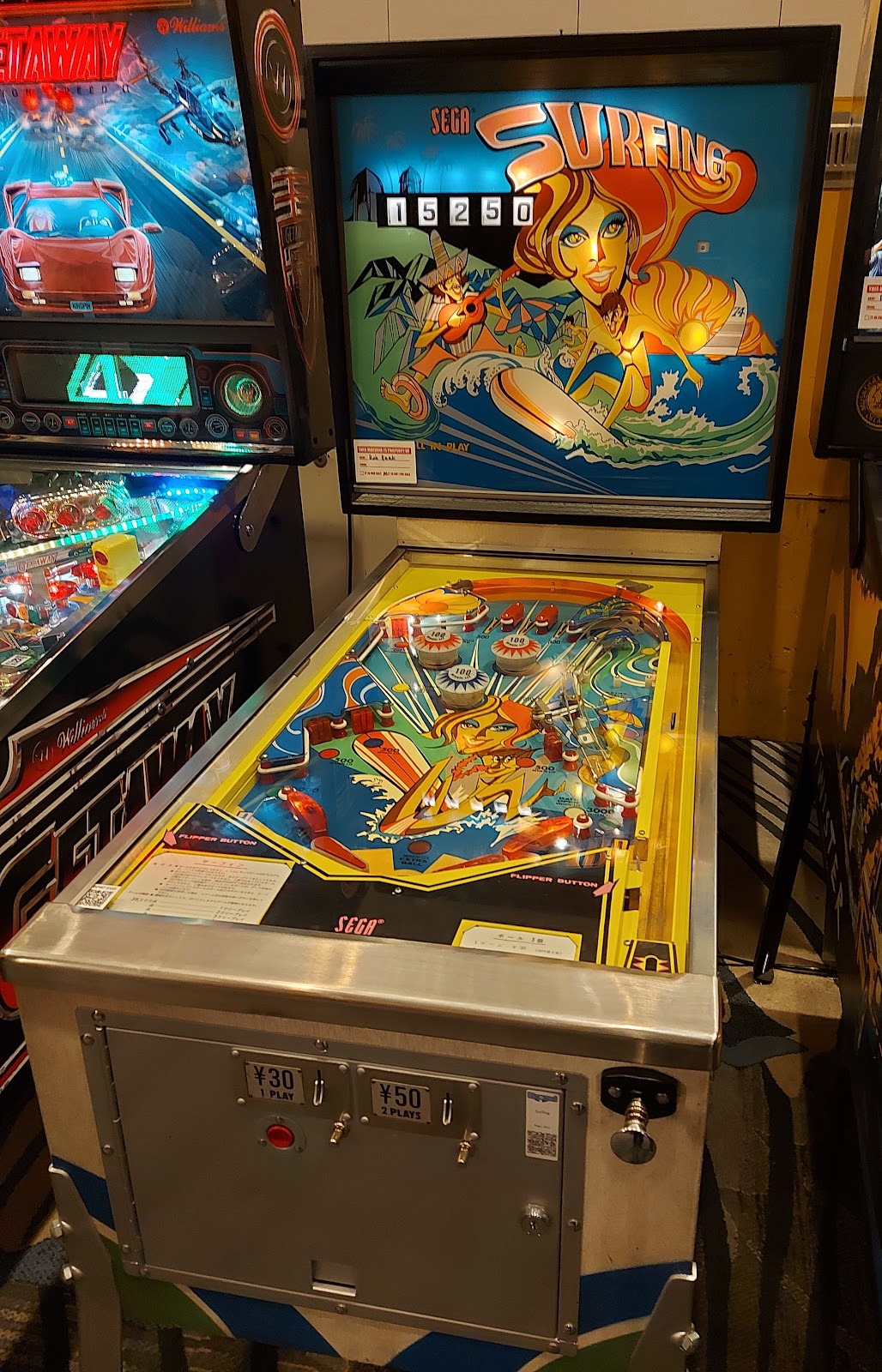
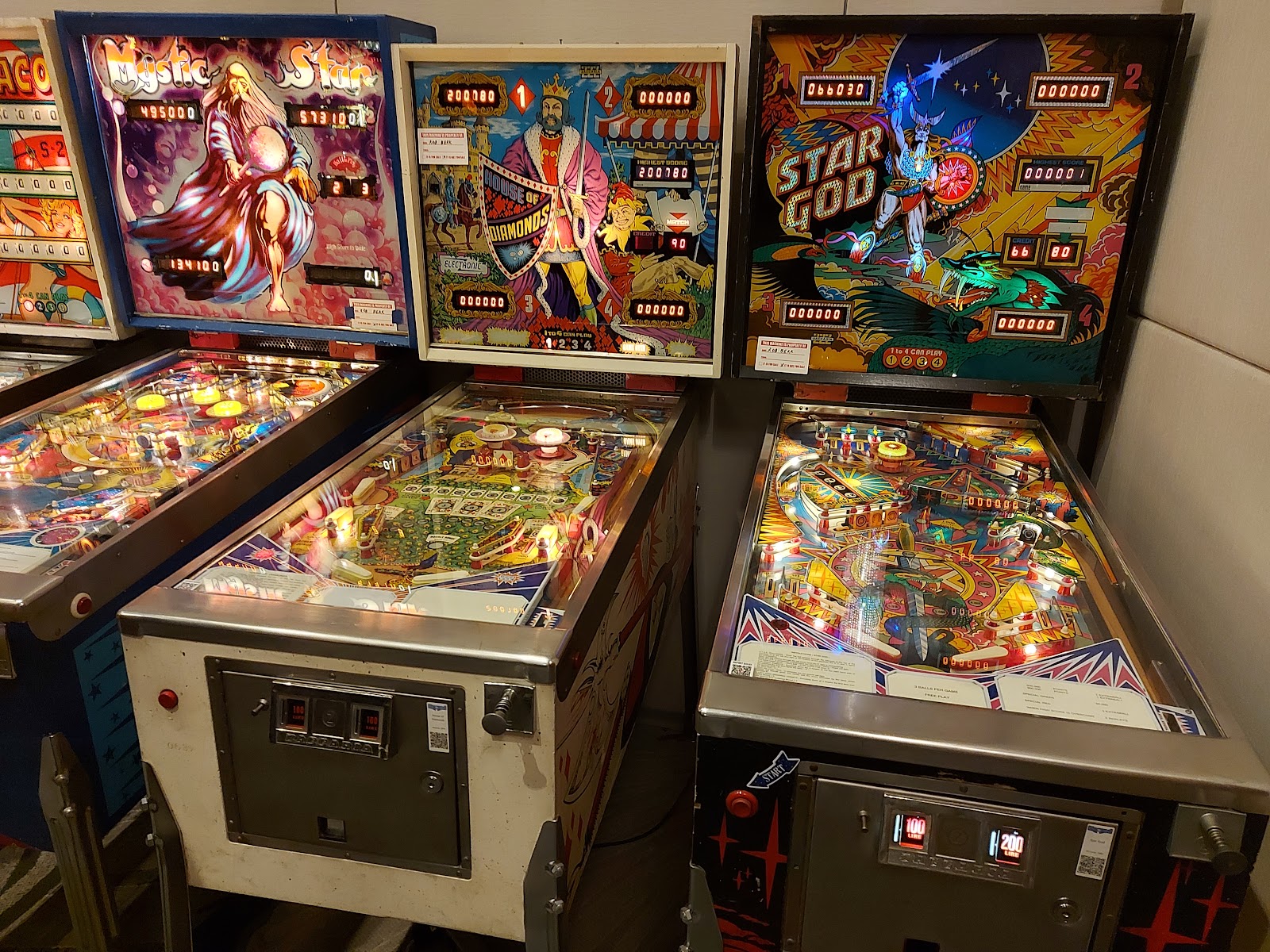


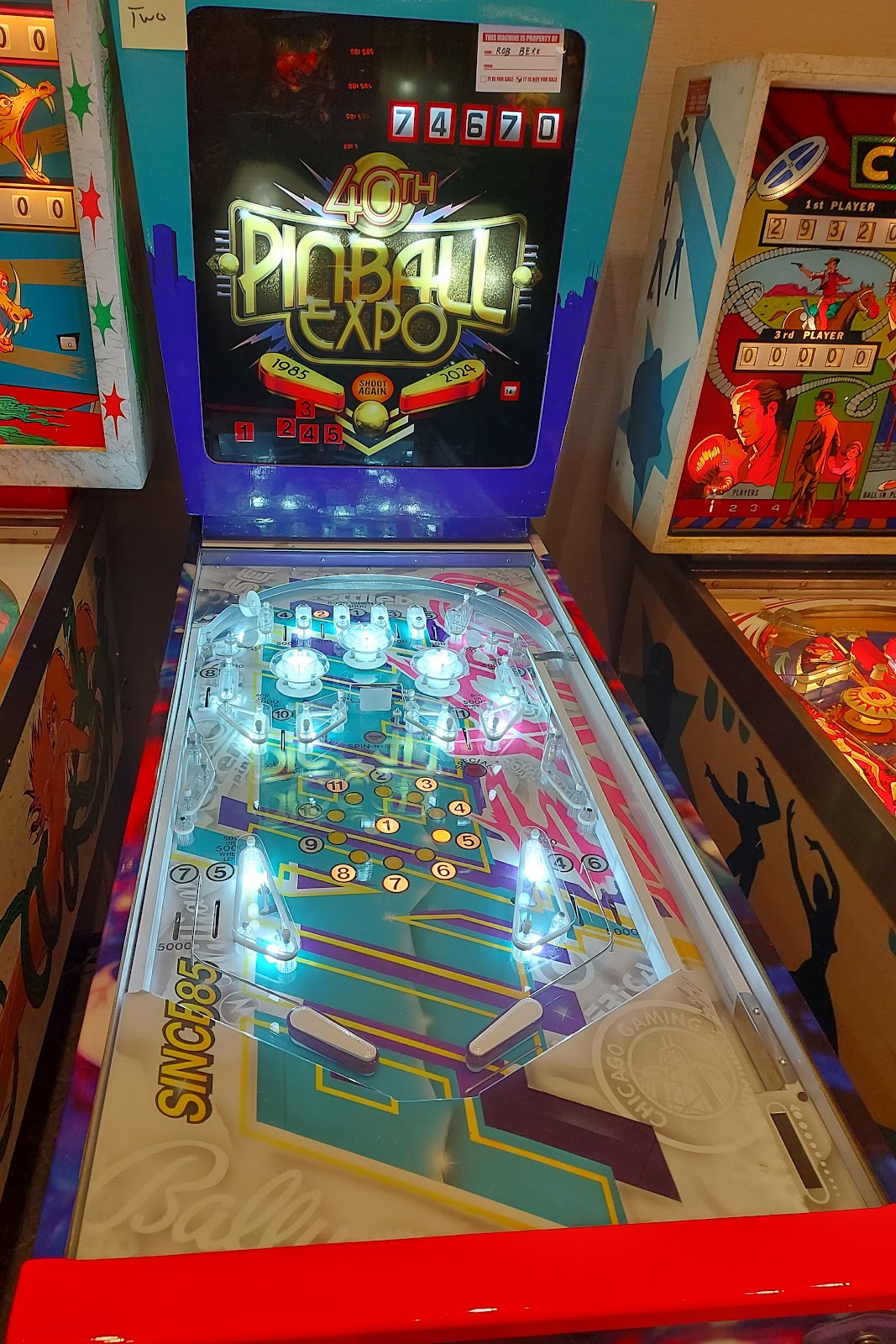





No comments:
Post a Comment